#Mary Shillito
Text
‘I did not see Mary and Violet any more that summer . . . I traveled about with my mother and I continued to read Alfred de Musset and the novels of George Sand, and so recovered a little of the mood that I had shared in Paris with the girls in the sweet secrecy of their little salon on the Avenue du Bois.’
— Mabel Dodge Luhan, Intimate Memories, Vol. I: Background, 1933
4 notes
·
View notes
Text
Artificial Intelligence Gives Researchers the Scoop on Ancient Poop
https://sciencespies.com/news/artificial-intelligence-gives-researchers-the-scoop-on-ancient-poop/
Artificial Intelligence Gives Researchers the Scoop on Ancient Poop

Everybody poops—and after a few thousand years underground, these droppings often start to look the same. That stool-based similarity poses something of a puzzle for archaeologists investigating sites where dogs and humans once cohabited, as it isn’t always easy to deduce which species left behind specific feces.
But as a team of researchers writes in the journal PeerJ, a newly developed artificial intelligence system may end these troubles once and for all. Called corpoID—an homage to “coprolite,” the formal term for fossilized feces—the program is able to distinguish the subtle differences between ancient samples of human and canine excrement based on DNA data alone, reports David Grimm for Science magazine.
Applied to feces unearthed from sites around the world, the new method could help researchers unveil a trove of valuable information about a defecator’s diet, health, and perhaps—if the excretion contains enough usable DNA—identity. But in places where domesticated dogs once roamed, canine and human DNA often end up mixed in the same fecal samples: Dogs are known to snack on people’s poop, and some humans have historically dined on canine meat.
Still, differences in the defecations do exist—especially when considering the genetic information left behind by the microbiome, or the microbes that inhabit the guts of all animals. Because microbiomes vary from species to species (and even from individual to individual within a species), they can be useful tools in telling droppings apart.
To capitalize on these genetic differences, a team led by Maxime Borry of Germany’s Max Planck Institute for the Science of Human History trained a computer to analyze the DNA in fossilized feces, comparing it to known samples of modern human and canine stool. The researchers then tested the program’s performance on a set of 20 samples with known (or at least strongly suspected) species origins, including seven that only contained sediments.
The system was able to identify all of the sediments as “uncertain,” and it correctly classified seven other samples as either dog or human. But the final six appeared to stump the program.

Ancient feces analyzed for the study
(Borry et al.)
Writing in the study, Borry and his colleagues suggest that the system may have struggled to identify microbiomes that didn’t fall in line with modern human and canine samples. People who had recently eaten large quantities of dog meat, for instance, might have thrown the program for a loop. Alternatively, ancient dogs with unusual diets could have harbored gut microbes that differed vastly from their peers, or from modern samples.
“There is not so much known about the microbiome of dogs,” Borry tells Vice’s Becky Ferreira.
With more information on how diverse canine gut microbes can get, he says, the team’s machine learning program may have a shot at performing better.
Ainara Sistiaga, a molecular geoarchaeologist at the University of Copenhagen who wasn’t involved in the study, echoes this sentiment in an interview with Science, pointing out that the data used to train coproID came exclusively from dogs living in the modern Western world. It therefore represented just a small sliver of the riches found in canine feces.
CoproID also failed to determine the origins of highly degraded samples that contained only minimal microbial DNA. With these issues and others, “there are definite issues that need to be resolved before the method can be used widely,” Lisa-Marie Shillito, an archaeologist at Newcastle University who wasn’t involved in the study, tells Michael Le Page of New Scientist.
With more tinkering, the method could reveal a great deal about the history of humans and dogs alike—including details about how the two species first became close companions, Melinda Zeder, an archaeozoologist at the Smithsonian Institution’s National Museum of Natural History who wasn’t involved in the study, tells Science.
As dogs swapped the fleshy, protein-heavy diets of their wolfish ancestors for starchy human fare, their gut microbes were almost certainly taken along for the ride. Even thousands of years after the fact, feces could benchmark this transition.
Says Zeder, “The ability to track this through time is really exciting.”
#News
25 notes
·
View notes
Photo





War Gardens were established to help supply the Nation’s need for food during World War I. These gardens were established throughout the city and shown in “Cincinnati War Gardens v.01” (1918). The Committee for Food Production divided the 228 acres of land under their supervision into eight divisions with Commandants leading those divisions: Mrs. Tenna Hoffer, Avondale, Mrs. Albert Morrill, then Mrs. Samuel Assur, East Walnut Hills, Miss Mildred Shillito, Mt. Auburn, Mrs. Magnus A. Tate, Clifton, Mrs. C. L. LaBoiteaux, College Hill, Miss Mary W. Kebler, Camp Washington, Mrs. W. S. Rowe, Pleasant Ridge, Cincinnati Garden Club, and Mrs. E. H. Oxley, City Colored Women.
21 notes
·
View notes
Photo
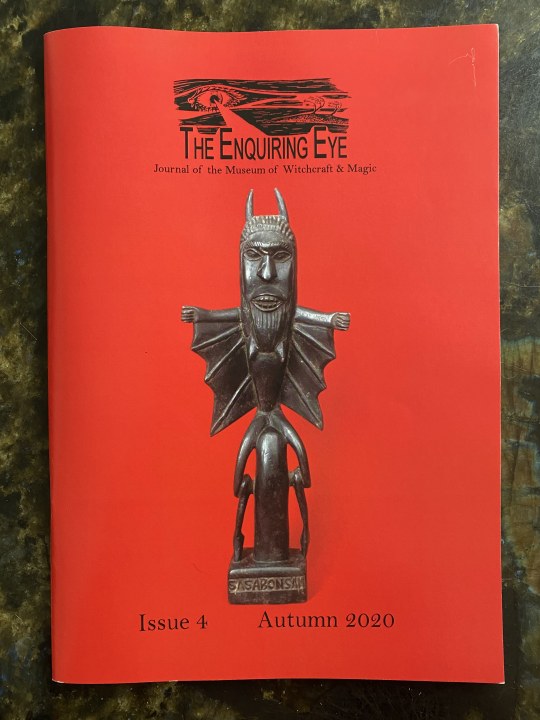
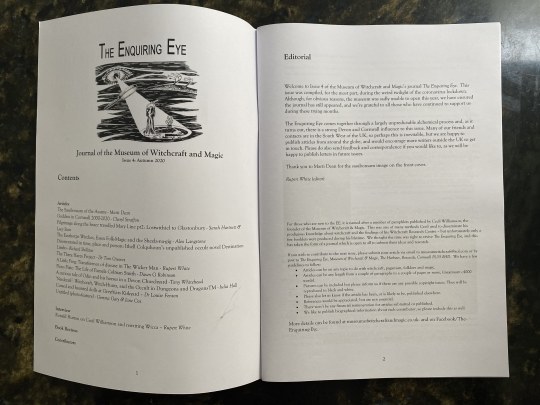




The Enquiring Eye is a museum journal that aims to showcase a wide range of research into all aspects of magical practise, witchcraft and the occult.
Articles
The Sasabonsam of the Asante – Marti Dean
Goddess in Cornwall 2000-2020 – Cheryl Straffon
Pilgrimage along the lesser travelled Mary Line pt2: Lostwithiel to Glastonbury – Sarah Hartnett &
Lucy Stein
The Easthorpe Witches, Essex Folk-Magic and the Sheela-na-gig – Alex Langstone
Disorientated in time, place and person: Ithell Colquhoun’s unpublished occult novel Destination
Limbo – Richard Shillitoe
The Three Hares Project – Dr Tom Greeves
A Little Frog: Transference of disease in The Wicker Man – Rupert White
Pious Pixie: The Life of Pamela Colman Smith – Dawn G Robinson
A curious tale of Odin and his horses in a Devon Churchyard -Tony Whitehead
‘Nerdcraft’: Witchcraft, Witch-Hunts, and the Occult in Dungeons and DragonsTM – Julia Hall
Cursed and haunted dolls at Greyfriars Kirkyard – Dr Louise Fenton
Untitled (photo-feature) – Gemma Gary & Jane Cox
Interview
Ronald Hutton on Cecil Williamson and rewriting Wicca – Rupert White
0 notes
Text
JUNE 11: Renée Vivien (1877-1909)
The British poet, noted Sappho fangirl, and one of the most high-profile lesbians of Paris’s Belle Époque days, Renée Vivien, was born on this day in 1877.

Pioneer of depressed moon lesbian culture, Renée Vivien poses with two black cats on her shoulders (x).
Born in London on June 11, 1877, Renée’s wealthy British father and American mother originally gave her the name Pauline Mary Tarn, which she would drop later on in life. She was sent to Paris for school, but was forced to return to London when her father died in 1886. Renée made no secret of the fact that she loved Paris and hated her family, so the move was devastating to her. In a twist of events worthy of an American soap-opera, Renée’s mother attempted to get her declared legally insane so that Renée would be passed over for her father’s inheritance and all the money would go to her, but the plot failed and Renée was taken away from her mother and kept a ward of the court for the rest of her adolescence. When she turned 21, she finally inherited her father’s fortune and moved back to her beloved city of Paris where took on the name Renée Vivien. .
In Paris, Renée became a notorious figure in Bohemian society; she wore lavish men’s suits and lived openly as a lesbian. She wrote two novels and fourteen collections of poetry throughout her lifetime and her writing was filled with allusions to Sappho, lavender, and her many relationships with women. She even refused to write in any language other than French because she found it to be the more romantic language. A woman named Violet Shillito was Renée’s childhood best friend and her first love; when she died of typhoid fever, Renée was inconsolable and many scholars interpret the frequent use of violets in Renée’s poetry to be a symbol for Violet herself. Renée also had a relationship with Natalie Clifford Barney, the American heiress and novelist. The relationship was passionate and often rocky due to both women’s jealous nature. However, there was a time when Renée and Natalie traveled to the island of Lesbos in Greece in an attempt to connect with their Sapphic roots and start a women’s artist colony.

Renée (left) and her partner Natalie Clifford Barney (right) photographed in 1900 (x).
Renée ended the relationship with Natalie in 1901 and she would go on to have many more relationships with women such as the Baroness Hélène van Zuylen and Kérimé Turkhan Pasha, but as affair after affair ended, Renée sunk deep into depression and began to indulge even more in her party lifestyle of drugs, alcohol, and wild sex. Her close friend Colette (who we have also covered on the blog!) was known to base her fictional characters on real life people and she immortalized Renée’s character and self-destructive behavior in her 1932 novel The Pure and the Impure. As Renée’s mental illness worsened, she eventually died in 1909 from alcoholism and anorexia.
-LC
#365daysoflesbians#renee vivien#renée vivien#lesbian history#wlw history#gay history#lgbt history#lgbtq history#lgbt#lgbtq#lesbian#wlw#1900s#paris#france#people
206 notes
·
View notes
Text
Stonehenge's Massive Megaliths May Have Been Moved into Place with Pig Lard
Stonehenge's Massive Megaliths May Have Been Moved into Place with Pig Lard #ArtNews
Old individuals may have moved a portion of the gigantic stone monuments of Stonehenge into spot by lubing monster sleds with pig fat, at that point sliding the goliath stones on them over the scene, another investigation recommends.
After re-breaking down earthenware pots that prior scientists accepted were utilized to prepare sustenance, paleontologist Lisa-Marie Shillito reasoned that a…
View On WordPress
0 notes
Text
Historical feces reveal parasites in 8,000-year-old village of Çatalhöyük
http://tinyurl.com/yygpuf2g
New analysis printed right this moment within the journal Antiquity reveals that historical faeces from the prehistoric village of Çatalhöyük have supplied the earliest archaeological proof for intestinal parasite an infection within the mainland Close to East. Folks first gave up looking and gathering and turned to farming within the Close to East, round 10,000 years in the past. The settlement of Çatalhöyük is legendary for being an extremely nicely preserved early village based round 7,100 BC. The inhabitants of Çatalhöyük have been early farmers, rising crops corresponding to wheat and barley, and herding sheep and goats. “It has been advised that this variation in life-style resulted in the same change within the kinds of illnesses that affected them. Because the village is without doubt one of the largest and most densely populated of its time, this research at Çatalhöyük helps us to know that course of higher,” says research lead Dr Piers Mitchell of Cambridge’s Division of Archaeology. The bathroom was first invented within the 4th millennium BC in Mesopotamia, 3000 years later than when Çatalhöyük flourished. It’s thought the folks residing at Çatalhöyük both went to the garbage tip (midden) to open their bowels, or carried their faeces from their homes to the midden in a vessel or basket to get rid of them. “We’d count on this to have put the inhabitants prone to illnesses unfold by contact with human faeces, and explains why they have been susceptible to contracting whipworm,” says the research first writer Marissa Ledger. “As writing was solely invented 3000 years after the time of Çatalhöyük, the folks have been unable to file what occurred to them throughout their lives. This analysis permits us for the primary time to think about the signs felt by a few of the prehistoric folks residing at Çatalhöyük who have been contaminated by this parasite.” To search for the eggs of intestinal parasites, Cambridge researchers Mitchell, Ledger and Evilena Anastasiou used microscopy to review preserved items of human faeces (coprolites) from a garbage tip, and soil fashioned from decomposed faeces recovered from the pelvic area of burials. The samples dated from 7,100-6150 BC. To find out whether or not the coprolites excavated from the midden have been from human or animal faeces, they have been analysed for sterols and bile acids on the College of Bristol Mass Spectrometry Facility by Helen Mackay, Lisa Marie Shillito, and Ian Bull. This evaluation demonstrated that the coprolites have been of human origin. Additional microscopic evaluation confirmed that eggs of whipworm have been current in two of the coprolites, demonstrating that folks from the prehistoric village have been contaminated by this intestinal parasite. “It was a particular second to determine parasite eggs over 8000 years outdated,” stated research co-author Evilena Anastasiou. Whipworms are 3-5cm in size, and reside on the liner of the intestines of the big bowel. Grownup worms can reside for five years. Female and male worms mate and their eggs are combined in with the faeces. Whipworm is unfold by the contamination of meals or drink from human faeces that comprise the worm eggs. A heavy an infection with whipworm can result in anaemia, diarrhoea, stunted development and decreased intelligence in kids. “Now we have to discover historical faecal materials from prehistoric hunter gathers within the Close to East, to assist us perceive how this variation in life-style affected their illnesses.” added Mitchell. ### The Cambridge crew labored on this undertaking with bioarchaeologists Scott Haddow (Division of Archaeology and Artwork Historical past, Koç College, Turkey) and Christopher Knüsel, (PACEA, College of Bordeaux, France) from the Human Stays Laboratory of the Çatalhöyük Analysis Mission, led by Professor Ian Hodder (Stanford College). Disclaimer: AAAS and EurekAlert! will not be chargeable for the accuracy of stories releases posted to EurekAlert! by contributing establishments or for the usage of any info by the EurekAlert system. Source link
0 notes
Photo
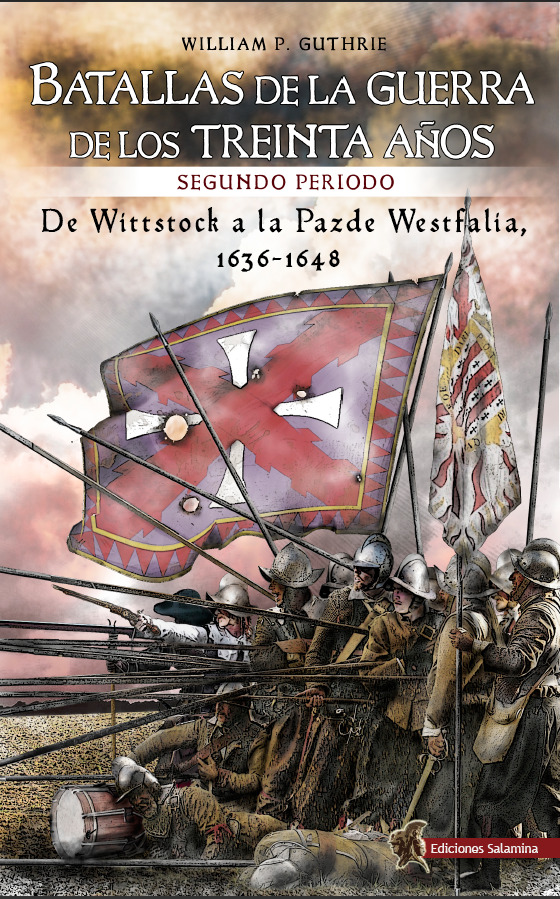
FULL STORY=> http://ift.tt/2Dbm0RC Revista Universitaria de Historia Militar. Vol. 6, Núm. 12 (2017) Revista Universitaria de Historia Militar. Vol. 6, Núm. 12 (2017) Arquitectura e instituciones militares: política, cultura y sociedad Las instituciones y la arquitectura militares nunca han constituido realidades al margen de su entorno, sino más bien todo lo contrario: unas veces han sido expresiones de un determinado statu quo y otras veces han contribuido a transformar sociedades, culturas y sistemas políticos. Así pues, las instituciones y la arquitectura militares son un reflejo de ese entorno en que surgen, de la interacción producida por los conflictos entre diferentes comunidades humanas y, por supuesto, de la evolución en los modos de hacer la guerra, a la vez que ponen de manifiesto los esfueroz de los estados y las comunidades por adaptarse a los retos cambiantes de cada época. Tabla de contenidos Dossier Presentación: Arquitectura e instituciones militares. Política, cultura y sociedad Centro de Estudios de la Guerra RUHM PDF Las murallas de Babilonia. Nueva interpretación de una maravilla del mundo antiguo. Juan-Luis Montero Fenollós PDF Sobrevivir en la frontera de la guerra santa: expansión política, cruzadas, explotación ambiental y el asentamiento medieval de colonización de Biała Góra, norte de Polonia Zbigniew Sawicki, Aleksander Pluskowski, Alexander Brown, Monika Badura, Daniel Makowiecki, Lisa-Marie Shillito, Mirosława Zabilska-Kunek, Krish Seetah PDF La instrucción de la oficialidad de infantería y caballería. Las academias militares en los reinados de Fernando VI y Carlos III David A. Abián Cubillo PDF Referencias culturales en la prensa interna de la Academia General Militar durante la Transición (1976-1978) José-Miguel Palacios PDF Estudios Obsessio montis Badonici. Britania ante las invasiones bárbaras: ¿pervivencia o abandono de los modelos del ejército romano tardío? Miguel Pablo Sancho Gómez PDF “Comer caldo aguado con cuchillo…” Organización y logística del Ejército del Midi en la prefectura de Jerez (1810-1812) Jean-Marc Lafon PDF La fuerza militar española en defensa de Pío IX (1848- 1850) Sergio Cañas Díez PDF La participación del régimen franquista en la exposición internacional anticomunista Le bolchevisme contre l´Europe (1942) Antonio César Moreno Cantano PDF Aportación de la experiencia bélica israelí a la teoría estratégica del poder aéreo, 1967-2014 Javier Jordán PDF Traducciones Reconstruyendo el “frente” y la “retaguardia”: experiencias de género y memoria de las guerras alemanas contra Napoleón – Un caso de estudio Karen Hagemann PDF Ensayos bibliográficos Las cruzadas bálticas y del Norte de Europa (1100-1562): la expansión de la Latinitas Antonio Contreras Martín PDF Reseñas David KONSTAN & Peter MEINECK (eds.): Combat trauma and the ancient Greeks, Nueva York, The New Antiquity, 2014, 310 pp., ISBN 978‐1137398857 Adrià Muñoz de la Luz PDF Jeremy ARMSTRONG: War and society in Early Rome: From Warlords to Generals, Cambridge, Cambridge University Press, 2016, 332 pp., ISBN: 978‐1107093570 Joan Oller Guzmán PDF Marta COCCOLUTO: Panis Ad milites. L’approvvigionamento dell’esercito romano in Numidia da Augusto ai Severi, Ancona, Edizioni Affinità Elettive, 2014, 193 pp., ISBN: 978‐88‐7326‐7 Pedro Pérez Frutos PDF Ermelindo PORTELA SILVA: El báculo y la ballesta. Diego Gelmírez (c. 1065‐ 1140), Madrid, Marcial Pons, 2017, 380 pp., ISBN: 978‐8415963974 Francisco Javier Pérez Rodriguez PDF Christopher TYERMAN: Cómo organizar una cruzada, Barcelona, Crítica, 2016, 624 pp., ISBN: 9788416771257 Oliver Vergés Pons PDF Richard W. KAEUPER: Medieval Chivalry, Cambridge, Cambridge University Press, 2016, 447 pp., ISBN: 9780521137959 David Porrinas PDF María LÓPEZ DÍAZ (ed.): Galicia y la instauración de la Monarquía borbónica. Poder, élites y dinámica política, editorial Sílex, Madrid, 2016, 377 pp., ISBN: 978‐84‐7737‐655‐2. Ruben Castro Redondo PDF Leonardo CANCIANI: Frontera, militarización y política armada. La Guardia Nacional de la Provincia de Buenos Aires durante la construcción del Estado Nacional (1852‐1880), La Plata, Asociación Amigos Archivo Histórico de la Provincia de Buenos Aires, 2017 Jorge Nahuel Vassallo PDF Antoinette BURTON: The Trouble With Empire: Challenges to Modern British Imperialism, Nueva York: Oxford University Press, 2015, 336 pp., ISBN: 978‐0199936601 María Gajate Bajo PDF Brian MURDOCH: German Literature and the First World War: The Anti-War Tradition. Collected Essays by Brian Murdoch, Farnham, 2015, 309 pp., ISBN 9781472452894 Axel Weipert PDF Adam TOOZE: El diluvio. La Gran Guerra y la reconstrucción del orden mundial (1916‐1931), Critica, Barcelona, 2016, 844 pp., ISBN: 978‐ 8498928747 Miguel Ángel Collado Aguilar PDF Miguel Ángel DIONISIO VIVAS: Por Dios y la Patria. El cardenal Gomá y la construcción de la España Nacional, Toledo, Instituto Teológico San Ildefonso, 2015, 440 páginas. ISBN: 978‐84‐15669‐37‐1 Marisa Tezanos Gandarillas PDF Raz SEGAL: Genocide in the Carpathians. War, Social Breakdown, and Mass Violence 1914‐1945, Stanford, Stanford University Press, 2016, 211 pp., ISBN: 978‐0‐8047‐9666‐8 Anna Hamling PDF Samuel H. YAMASHITA: Daily Life in Wartime Japan, 1940‐1945, Lawrence, University of Kansas Press, 2015, 256 pp., ISBN: 9780700624621 Aaron William Moore PDF Christian G. DE VITO, Ralf FUTSELAAR, Helen GREVERS (eds.): Incarceration and Regime Change: European Prisons during and after the Second World War, New York, Berghahn Books, 2017, 178 pp., ISBN 978‐1‐78533‐265‐4 Javier Rodrigo PDF Daniele GANSER: Los ejércitos secretos de la OTAN. La operación Gladio y el terrorismo en Europa occidental, Mataró, El Viejo Topo, 2010, 388 pp., ISBN: 978- 8492616527 Javier Lion Bustillo PDF Pierre RAZOUX: The Iran‐Iraq War, Cambridge, Belknap Press, 2015, 688 pp., ISBN: 978‐0674088634 James Bowden PDF Ignacio ÁLVAREZ‐OSSORIO: Siria. Revolución, sectarismo y yihad, Madrid, Los Libros de la Catarata, 2016, 192pp., ISBN: 978‐84‐9097‐235‐9 Rocío Velasco de Castro
0 notes
Text
‘I remember only the room in which I spent the night with Violet, Mary sleeping next to us in a small adjoining dressing-room. The picture comes back to me clearly: Violet and Mary and I standing on the old stone floor that had a few strips of rush matting on it, standing in our little flannel peignoirs, brushing our hair, while two candles on the muslin-covered dressed threw great shadows of us over the whitewashed walls.’
— Mabel Dodge Luhan, Intimate Memories, Vol. I: Background, 1933
3 notes
·
View notes
Photo
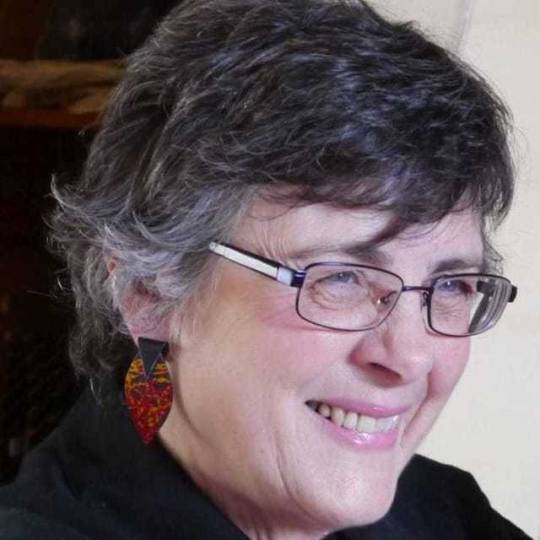
| #3dprint | Ann Marie Shillito – “One of my personal aims is to make 3D printing accessible to artists and designe… https://t.co/N2uCAjXVoW
0 notes
Text
Prehistoric homes would have failed modern air quality tests
https://sciencespies.com/environment/prehistoric-homes-would-have-failed-modern-air-quality-tests/
Prehistoric homes would have failed modern air quality tests
Domestic burning of wood and dung fuels in Neolithic homes would have exceeded modern internationally-agreed standards for indoor air quality, exposing inhabitants to unsafe levels of particulates.
Working with environmental engineers, archaeologists at Newcastle University, UK, used modern air quality monitoring methods to assess the impact of domestic fuel burning inside buildings at Çatalhöyük, in Turkey, one of the world’s earliest settlements.
A typical house at Çatalhöyük, a UNESCO World Heritage site, had a domed oven set against the south wall, located beneath an opening in the roof. In the 1990s, a replica of one of these houses was built at Çatalhöyük to show visitors what they may have looked like during the time of occupation.
Although previous studies have shown that burning biofuels has significant negative consequences on health, especially in enclosed spaces with poor ventilation, the relationship between fuel use and health in prehistory has never been explored.
The research team, which included experts from Northumbria, Durham and Copenhagen universities, burned different types of fuel in the hearth of the replica house and measured pollution levels to test how living in these buildings may have exposed the inhabitants to fine particulate matter and impacted on their respiratory health.
The research, which was funded by the Wellcome Trust, found that the average levels of fine particulate matter (PM2.5) over a two hour period were extremely high and that concentrations continued to remain high up to 40 minutes after the fires had burnt out afterwards.
The results indicated greater exposure directly in front of the oven although similar levels were also detected to the side of the hearth, suggesting that a person’s position in relation to the fire would have had only a minimal impact on exposure.
Dr Lisa-Marie Shillito, Senior Lecturer in Landscape Archaeology, explained: “At Çatalhöyük, the lack of a proper chimney, and the fact that buildings consist of a single, small room that combined living space and the hearth, means that anyone inside the building would have been exposed to unsafe levels of particulates as a result of everyday domestic activities. This would almost certainly have had a negative health impact on these communities, due to a combination of an open fire and lack of ventilation.”
Studying air pollution and respiratory health in the past can be challenging because human remains do not always provide clear signs due to inadequate preservation. Small particles of PM2.5 can travel deep into the lungs where they become embedded in the tissue and can even enter the blood stream, triggering an inflammatory response outside the lungs. The remains of many of the inhabitants of Çatalhöyük show signs of osteoperiostitis, or bone lesions, which can be response to infection, and the research team suggest that this may be explained by the chronic exposure to PM2.5 that this community would have had.
Professor Anil Namdeo, Professor of Air Quality Management, Northumbria University, said: “This work has important implications for the current era. Many communities all around the world still use biomass for cooking and heating, and in poorly ventilated houses, resulting in more than four million deaths each year associated with indoor air pollution. Our study highlights this issue and could pave the way for developing mitigation measures to minimise this.”
Story Source:
Materials provided by Newcastle University. Note: Content may be edited for style and length.
#Environment
0 notes
Text
‘When she [Pauline] got rid of the governesses and even of the guardian and began to write poetry and have poets come to see her, Mr. Shillito had forbidden any further friendship between the girls and her. She was no longer comme il faut. So Violet saw her seldom now—it was difficult to manage meetings. She slept all day and the Shillito girls slept at night! But once in a while Violet stole up there late to Pauline, who adored her younger friend and felt her rarity. Violet spoke of Pauline, three years her senior, as one would of a beautiful, helpless child: “Pauvre chérie!”’
— Mabel Dodge Luhan, Intimate Memories, Vol. I: Background, 1933
#Mabel Dodge Luhan#Intimate Memories#Pauline Tarn#Renée Vivien#Violet Shillito#Mary Shillito#nf#p. 251
5 notes
·
View notes
Text
‘On the floor above the Shillitos there lived another mysterious girl. They told me about her—the beguiling, lovely Pauline Tarne, whose parents were dead and who had all the money she wanted and who lived there alone, writing poetry alone at night in a kind of hidden chapel in which she burned incense. She and the Shillitos had played together in the Bois when they were little girls, and she had had a governess and a guardian. When she reached eighteen years of age she had been presented at court in England. Violet had a little photograph of her in a long white train. Her mutinous face looked eager and beautiful.’
— Mabel Dodge Luhan, Intimate Memories, Vol. I: Background, 1933
#Mabel Dodge Luhan#Intimate Memories#Violet Shillito#Mary Shillito#Pauline Tarn#Renée Vivien#nf#pp. 250–251
4 notes
·
View notes
Text
‘Violet played Chopin for me. She had a little grand piano there in the small salon and she used to play late in the afternoons before dark, or evening by candlelight, when I had gone there to dine.
Then, when the limit of romantic love and sadness had been sounded, she would play Beethoven and cut deeper channels for feeling and beauty to flow in—the acceptance of life and resignation to its betrayals. Mary’s tears flowed when Violet played Beethoven.’
— Mabel Dodge Luhan, Intimate Memories, Vol. I: Background, 1933
2 notes
·
View notes
Text
‘Violet Shillito did not burst on me all at once: she came into me gradually, opening slowly to my perceptions like a flower that reveals its beauty slowly bit by bit as one looks deeper into it. At the first glance she seemed all brown and dusky, ruddy tones—a red-brown girl of medium height and with a flat, slender body that swayed backwards a little. Her hair was soft and dark and done ina knot on the top of her head. Her eyes were red-brown and slanted up a little at the corners, while her mouth was drawn over her teeth, which projected ever so little, in a willful way that would keep the lips closed, while Mary with the same defect let her lips gape open to the undisciplined teeth that pushed their way outwards or left her under lip to support their white surfaces. Violet’s nose was the most sensitive feature she had, after her small eyes that smiled a compassionate understanding of everything in life. Her nose was small and high-bridged and delicately pointed out into the world as though she constantly apprehended the unseen with some kind of invisible antennæ that groped and sensed the things about her. Her nostrils were close and fine and constantly trembled with delicate nervousness. Violet seemed to receive her impressions with that sensitive pointed nose of hers. It wasn’t a silly, unbridled nose like those of certain English women, with their ridiculous Peter Newell stupidity. It was a short, high organ of intelligence—aristocratic and discriminating, and a little sensual.’
— Mabel Dodge Luhan, Intimate Memories, Vol. I: Background, 1933
2 notes
·
View notes
Photo
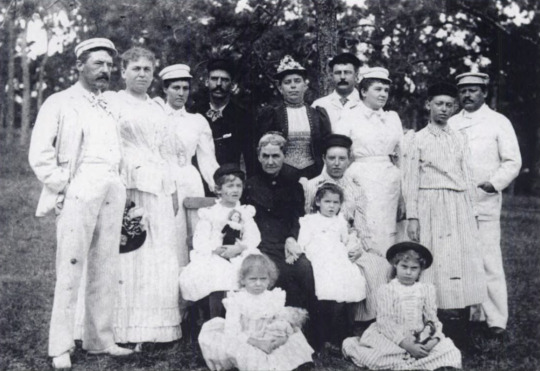
‘In the late 1880s, three families from Cincinnati got together and decided to create a residential compound in Osterville on the bluffs near the mouth of the Centerville River. They called it Hi Ga Ho, an acronym for their family names, Hinkle, Gaff, and Holmes. Here, a representative group poses for a photograph. From left to right are (first row) Elsie Holmes and young Zaidee Gaff; (second row) Rachel Holmes, Grandmother Rachel Gaff, Violet Shillito, and Polly Holmes; (third row) Daniel Holmes, Dickie Gaff Holmes, Zaidee Gaff, Thomas Gaff, Jane Shillito, Charles Hinkle, Mary Gaff Hinkle, Mary Shillito, and Gordon Shillito.’
— Shirley Eastman, Osterville, 2006
#Photographies#Violet Shillito#VS photographie#Mary Shillito#MS photographie#Osterville#Shirley Eastman
4 notes
·
View notes